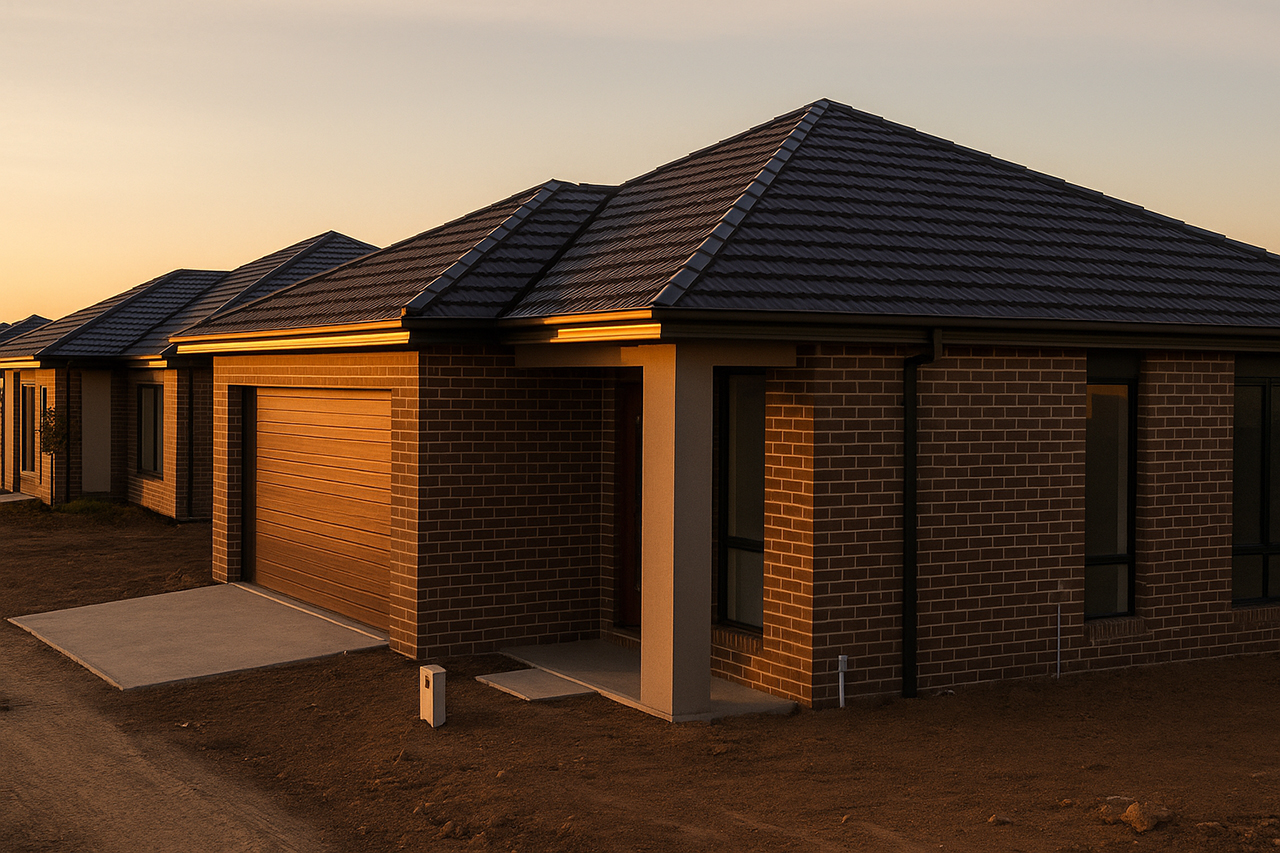Find Out More About Being a First Home Buyer
The concept of the “Australian Dream,” once synonymous with homeownership, is being redefined in today’s economic climate. With rising property prices and stagnant wage growth, many Australians find themselves questioning the attainability of owning a home. The challenges are palpable, even for those in well-paying professions who face significant financial stress when trying to secure a mortgage. As the government rolls out various assistance programs to support first-time buyers, the effectiveness and sustainability of these measures remain in question. How can Australians navigate these obstacles and what role do strategic investments and financial planning play in realizing their homeownership dreams? We invite you to explore these issues with us, drawing on expert insights and real-life testimonials to illuminate possible paths forward.

Is the Australian Dream Dead?
Challenges to Homeownership
The road to homeownership in Australia is fraught with significant challenges. Skyrocketing property prices are a primary hurdle, with the cost of homes increasing at a pace that far outstrips wage growth. This disparity places a heavy burden on potential homeowners, especially those in professions traditionally considered stable but not highly lucrative. Even individuals in top-paying jobs face the reality of devoting a substantial portion of their income to meet mortgage repayments. For instance, childcare workers may need to commit up to 92% of their earnings to housing costs. Additionally, the requirement for a sizeable deposit further complicates matters, extending the timeline for many aspiring homeowners. Though government initiatives like first home buyer grants seek to alleviate some of these challenges, their effectiveness in bridging the affordability gap remains questionable. Consequently, many Australians are forced to reconsider their homeownership ambitions, weighing the financial risks against their dreams.
Government Schemes and Assistance
In response to the mounting challenges of homeownership, the Australian government has introduced various schemes aimed at assisting first-time buyers. Programs such as the First Home Owner Grant and the First Home Loan Deposit Scheme are designed to ease the financial burden by reducing the initial deposit required and offering financial support. These initiatives aim to make the dream of owning a home more accessible to a broader audience. However, questions linger regarding their long-term efficacy. Critics argue that while these schemes provide short-term relief, they may inadvertently contribute to inflated property prices by increasing demand. Moreover, the eligibility criteria for these programs often exclude a significant portion of aspiring homeowners, particularly those living in areas where property values exceed government-imposed caps. As these programs evolve, their ability to offer sustainable solutions to the affordability crisis will be pivotal in determining whether the Australian Dream is truly within reach for future generations.

Evolving Perspectives on Homeownership
Young Adults’ Housing Priorities
In the face of high property prices and stagnant wage growth, young adults in Australia are re-evaluating their housing priorities. While homeownership remains a significant aspiration, the approach to achieving it is shifting. Many young Australians now prioritize flexibility and lifestyle over immediate property ownership, opting to rent or delay purchasing a home. This decision allows them to focus on other important life goals, such as career advancement, travel, or further education. Additionally, the financial burden associated with owning a home—such as saving for a deposit and managing mortgage repayments—has led some to reconsider the timing of their purchase. As a result, there is a growing trend of young adults choosing to invest in experiences or alternative investment opportunities rather than property. This evolution in priorities reflects a broader cultural shift, where the traditional notion of the Australian Dream is being adapted to fit modern economic realities and lifestyle preferences.

Delayed Ownership and Life Goals
For many young Australians, the decision to delay homeownership is closely tied to broader life aspirations. Faced with the daunting prospect of saving for a substantial deposit amid rising property costs, many opt to allocate resources toward personal growth and experiences. This shift is evident in the increasing number of young adults prioritizing travel, education, or starting a business over immediate homeownership. By delaying the purchase of a home, they gain the financial flexibility to explore these opportunities without the constraints of a mortgage. Additionally, this delay allows them to build a more stable financial foundation, which may include paying off existing debts or enhancing their career prospects, ultimately positioning them better for future homeownership. This trend suggests a redefinition of success for younger generations, where the value of experiences and personal development is weighed alongside traditional financial milestones like buying a home. Such evolving priorities highlight a significant cultural shift in how young Australians approach life goals.
Property Market Trends
Rising House Prices vs. Salaries
The disconnect between rising house prices and stagnant salaries is a critical issue impacting the Australian property market. Over the past decade, property values in major cities have surged, creating a formidable barrier for prospective homeowners. This escalation in prices is largely driven by high demand and limited supply, especially in urban areas where job opportunities are concentrated. In contrast, salary growth has not kept pace, leaving many workers struggling to bridge the gap between what they earn and what is required to purchase a home. This disparity forces potential buyers to either compromise on location and property size or extend their timelines for saving a deposit. The challenge is particularly acute for those in the middle-income bracket, who may not qualify for government assistance yet cannot afford the steep costs of homeownership. This ongoing trend highlights the pressing need for comprehensive policies that address both housing affordability and wage growth to restore balance in the market.

Shift to Property Investment
The increasing challenge of affording homeownership has prompted many Australians to explore property investment as an alternative. This shift reflects a strategic approach where individuals view real estate not merely as a home but as a lucrative investment opportunity. The potential for generating rental income and capital appreciation makes property investment attractive, even for those who cannot immediately afford to live in their purchased properties. Consequently, some Australians choose to buy investment properties in more affordable areas, capitalizing on market growth while continuing to rent in their desired locations. This trend indicates a broader change in mindset, where the traditional goal of living in one’s own home is balanced against the financial benefits of property investment. Moreover, this approach can serve as a stepping stone, helping investors accumulate wealth that may eventually facilitate homeownership in preferred areas. As this strategy gains traction, it underscores the evolving nature of the Australian property market.

Government and Industry Roles
Federal Programs and Their Impact
Federal programs aimed at assisting homebuyers play a crucial role in shaping the housing market landscape. Initiatives like the First Home Owner Grant and the Lenders Mortgage Insurance scheme are designed to make homeownership more attainable by reducing upfront costs and providing financial support. These programs have had a measurable impact by increasing the number of first-time buyers entering the market. However, the long-term effectiveness of these initiatives is often debated. Critics argue that while they offer initial relief, they may inadvertently contribute to rising property prices by boosting demand without addressing supply constraints. Additionally, these programs often have stringent eligibility requirements, limiting their accessibility and effectiveness for a broad range of potential buyers. As housing affordability remains a pressing issue, the government faces the challenge of balancing immediate assistance with sustainable, long-term solutions. Enhancing these programs to better address the root causes of affordability could significantly influence the future of the Australian housing market.
Ensuring Future Housing Affordability
Ensuring future housing affordability in Australia demands a multifaceted approach involving both government intervention and industry collaboration. One critical aspect is increasing the housing supply to meet the growing demand, which requires streamlined planning processes and incentives for developers to build affordable housing. Additionally, policies that promote diverse housing solutions, such as co-housing and community land trusts, can offer alternative paths to homeownership. The government also plays a vital role in stabilizing the rental market, as affordable rental options can relieve pressure on the housing market and allow potential buyers more time to save for a deposit. Financial education and assistance programs can further empower individuals to make informed decisions about homeownership and financial planning. Collaboration between government and industry stakeholders is essential to implement these strategies effectively. By fostering innovation and prioritizing long-term affordability, Australia can create a more equitable housing market that accommodates the diverse needs of its population.

Any Questions? Book a time with Vaughan today.
If you’re a first home buyer you can read more here.







